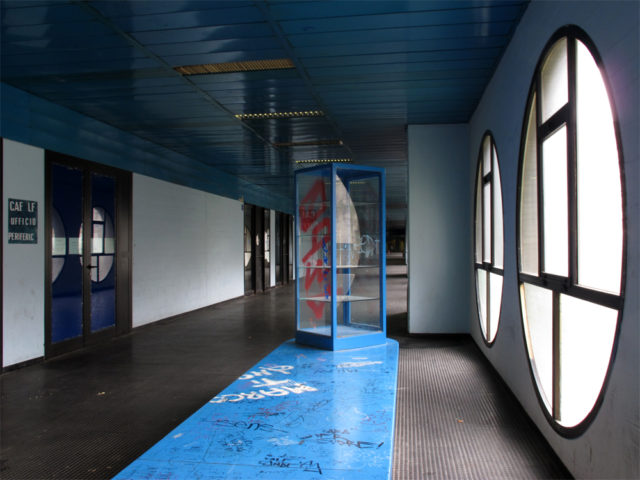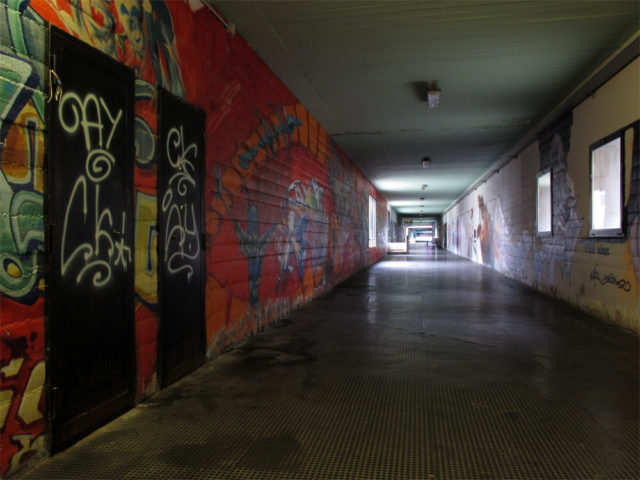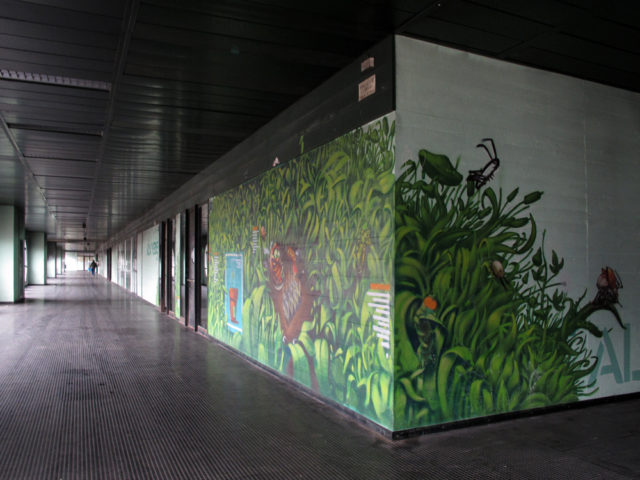In 1964, a plan appeared to build a new residential area called the Rozzol Melara. Four years later, a site in Trieste four kilometers (almost two and a half miles) east of the city center was settled on as the prime location.
In Italy, there is a government agency that is responsible for providing affordable housing. It is called the Territorial Housing Agency of Trieste (Italian abbreviation ATER).
It was founded in the city of Trieste on July 14, 1902.
Initially, it was called the Municipal Institute for Affordable Housing, which was then changed to Autonomous Council Housing Institute, before it became known as ATER. Today, ATER owns about 11% of rented homes within the province.

The site was considered ideal because it was on a hillside at the top of the valley overlooking the city and the sea.
This location was chosen because the project’s aim was to create, away from the city, a little settlement that offered all the necessary facilities, including shops and schools. It was hoped that Rozzol Melara would be a “mini-city.”
This project was further developed by a group of engineers from Trieste together with the architect Carlo Celli in 1968.
Their work was based upon the socio-architectural theories of the French architect Le Corbusier, who was known for his urban planning. Le Corbusier wanted to try and provide better living conditions for people in crowded cities.
Features that the architects focused on were a network of walkways to connect the buildings and landscaping as well as various services and playgrounds that would bring the residents together.

By 1979, the first keys were being given out, mainly to young couples, even though the construction of the residential complex didn’t finish until 1981.
Rozzol Melara was built in a brutalist style over an area of 11 hectares (27 acres). It consisted of 468 apartments which could accommodate about 2,500 residents, a medical center, more than twenty shops, schools, and a garage
The multi-story concrete blocks making up the building were constructed in an L-shape with a courtyard between them.
The two buildings were joined by passages and walkways that formed a large cross in the central courtyard. It was hoped that the courtyard would become a community space where people met up and enjoyed social events.

Unfortunately, a lack of planning control after Rozzol Melara was built led to its eventual failure.
Other buildings were constructed in and around the complex, which undermined the original architects’ ideas about the relationship between the construction and the green space.
Furthermore, activities and services which were supposed to be located in the courtyard began to spread out, losing the feel of a community space.
However, as time went on, the state of the building began to degrade and several maintenance interventions were undertaken.
A lot of graffiti began to appear inside the buildings. In order to address these problems, ATER announced a tender for the repair of the complex in 2002.
The terms of the competition required that the central space of the courtyard area was modernized. If necessary, it could even be demolished.
Mainly, the company wanted to restore its original purpose as a convenient location offering services and community events.
The company also suggested vehicle access (which was poor) could do with updating and the areas facing towards Trieste itself, which had become sprawling with new builds, could be redesigned.
The fate of this domineering building is yet to be decided.
But since many sources indicate that this is an uncomfortable place to live since the residents feel unsafe, it seems likely that any future renovation is going to involve an approach that is more sympathetic to the needs of the residents and less about making an architectural point.






















Another Article From Us: The Derelict Newburgh Masonic Temple, Cleveland, Ohio

